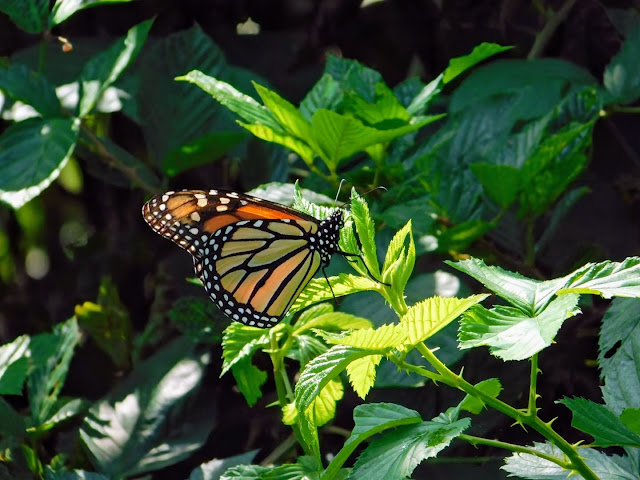"Conservation is at the heart of all gardeners who work alongside nature and allow their backyard to become a wildlife habitat." ~Homegrown Herb Garden
Monarch Butterfly (Danaus plexipus) on Milkweed (Asclepias)
Do you enjoy observing nature, listening to birds sing, and watching the graceful wings of a butterfly as it feeds on the sweet nectar of flowers?
If so, then landscaping for wildlife will add beauty and purpose to your property, Wildlife habitat is greatly reduced as human communities continue to develop the land for housing, shopping, and recreation. This causes wildlife species to seek new sources of habitat where they can live and thrive.
Even the smallest of properties can be enhanced to benefit wildlife. You can make your property wildlife friendly by adding simple components such as native plants, water sources, and feeders.
The four basic need of wildlife are:
- Space
- Food
- Water
- Shelter
Food that provides for life stage and seasonal changes such as sources of berries, seeds, grasses, grains, flowers, herbs, insects, nectar, nuts, trees, and shrubs will serve various species.
Either a natural or constructed water source is vital for wildlife to thrive. Birdbaths are inviting and flowing water fountains are especially attractive to a variety of birds.
Shelter is necessary for protection from adverse weather conditions and predators (feral cats that kill nearly 50% of songbird fledglings). Landscape features such as bird houses, shrubs, and trees serve more than one purpose.
Providing these four basic needs of wildlife throughout the seasons requires a diversity of plants and structures.
A good way to begin is by sketching a map of your property and deciding what type of species you want to attract. Simple additions will attract birds and butterflies. Planting milkweed for Monarch butterflies (Danaus plexippus) helps support their main life stages:
- Egg
- Caterpillar
- Chrysalis
- Butterfly
Landscaping for wildlife makes for a fun, educational, and rewarding hands on project for the whole family. Homeschool families can journal and photograph their work to showcase in an annual portfolio.
Additionally, you can certify your property with the National Wildlife Foundation's Wildlife Habitat Program. To learn more, please visit- National Wildlife Foundation Certify
There are a plethora of books, guides, garden centers, and websites that offer additional information specific to each region and are readily found in an online search.
For any concerns or inquiries, local organizations specializing in gardening, landscaping, or property management should be able to offer assistance.
Lastly, if your interested in learning more about the importance of the Monarch and would like to participate in community/citizen science projects related to Monarch butterfly research, then visit this excellent website- Monarch Joint Venture




.jpg)

